On July 27, Scott Huebner of Brickstack Architects became the first Asheville architect to receive the top George Matsumoto Prize. The award comes from the only juried architectural competition in North Carolina. Huebner was honored for his West Chapel house in Black Mountain.
North Carolina Modernist Houses created the Matsumoto Prize in 2012 to honor of one of the founding faculty members of North Carolina State University’s College of Design, and to inspire young architects, designers and prospective clients to continue the Modernist movement. Matsumoto, who died in 2016, is credited with creating some of North Carolina’s most well-known and beloved Modernist homes.
Based in Durham, NCMH “provides donors, volunteers and advocates the information and organization they require to passionately engage the documentation, preservation and promotion of North Carolina’s residential Modernist architecture.”
“The ideal client”
In their initial meetings to discuss what to build on their steeply sloping Black Mountain property, clients Anne and James Dale provided Huebner with two generic floor plans that they found online. The retired couple’s major requirement was to have the master bedroom, kitchen and living and dining spaces all on the main level. They desired a house that would allow them to age in place and wouldn’t present challenges should they become disabled.
Other requests were a pair of guest bedrooms downstairs, next to James’ shop space, that had to be accessible from the exterior. The clients otherwise had modest expectations and didn’t have a clear vision of what they wanted, but were happy to let Huebner be imaginative with his design — a trust and freedom that he greatly appreciated.
“I’ve had clients who’ll present me with something and then they expect you to kind of regurgitate what they present you,” Huebner says. “The Dales were not that kind of client, and that usually indicates a fairly open-minded, adventuresome client.”
He continues, “And then also that typically means that they’re open to the process of design, which means they come to the table with maybe a seed of idea or they like certain components about this plan that they present me — and then they fully intend for whatever I do to apply my own skill set to it and creativity and come up with a solution that’s very different but maybe has some of the elements that they appreciated about the thing they presented to me.”
Huebner notes that one way to achieve a one-level main living space on such challenging terrain is to build a long, winding driveway down to a building pad, clearing every tree between the street and parking area. Instead of obliterating the site in that manner, he did something more creative and designed a timber and steel bridge that connects the garage directly to the street. As the steep grade falls away, the bridge remains constant. The resolution allowed for minimal site costs and site work and also preserved the native landscaping and mature trees — a decision that Huebner applauds.
While the arbor saving only gives the homeowners an impressive view in winter when the leaves fall off, Huebner says the Dales weren’t hyperfixated on constant stunning vistas. As such, the rest of the year makes daily life feel like being in a treehouse. That sense is especially strong in the screened porch of the living room space, part of a 16-foot steel cantilever that nestles into the trees, supported by steel structure. Copious large windows help to bring the natural element into the house, and negates the need much artwork on the walls.
“[The Dales] had really no preconceptions about what the house should be. So, the design process was kind of a series of discoveries about letting the design unfold,” Huebner says. “They’re kind of the ideal client, honestly.”
Outfitting the house with a metal roof in a soothing gray color, Huebner also wanted to be expressive with steel. While the fairly modern material is often covered up by sheetrock and merely present to support things invisibly, Huebner saw the potential for it to be part of the house’s design language. Its implementation gives the house an industrial feel that he was able to soften with natural wood.
“Steel can be very elegant if it’s articulated well,” he says. “I don’t think it looks like a bridge, per se. A lot of highway bridges have this overwrought, heavy-handed approach to them, but I think we used the steel in a way that was a bit more elegant. And certainly with that really large cantilever, I think we were able to do some stuff that was somewhat unexpected in what steel can really do.”
The Matsumoto Prize
Huebner describes most of his prior work as “fairly contemporary,” though largely quiet in terms of design. With the West Chapel house making more of a statement than his past creations, he felt it was a project that fit NCMH’s mission and was striking enough to grab the Matsumoto jury members’ attention.
For his first submission to the competition, Huebner was required to write a brief statement about the house as well as provide up to 20 photographs of its interior and exterior, along with floor plan drawings and exterior elevations. Though not required, NCMH recommended that entrants record a straightforward two or three minute video in which they provide an overview of the project. One day, while visiting the house Huebner has under construction next door to the Dales’, he set up a tripod and ad-libbed his summation of the project in one informative take.
Huebner was not able to attend the Matsumoto Prize ceremony at McConnell Studios in Raleigh, but NCMH executive director George Smart contacted him with the news of his win. Smart also provided some feedback from his conference call with jurors Carl Abbott, Paul Goldberger, Curt Fentress, Ron Radziner, Harry Wolf and Robert Miller — none of whom live in North Carolina. Though Smart didn’t say it was a unanimous decision, he said Huebner’s entry was many jurists’ first choice.
“They liked that the cantilever seemed to be not borne out of just structural heroics but also out of a response to the site and the design — it didn’t feel arbitrary. They felt that the cantilever contributed to the design in a way that felt natural and not forced, and I think they probably responded to that fact that it lent itself to minimizing some of the site disturbance,” Huebner says.
“These are people in the architectural world who are household names, so having those people does carry some weight. It’s not the Pritzker Prize [generally considered the profession’s highest honor], but it’s a big deal for North Carolina. … I was obviously very honored. It’s people whose work I admire. For instance, Paul Goldberger, obviously he’s a very well respected architecture critic. The things that he’s written about over the years, I’m sure projects like mine are small potatoes, but it’s certainly nice for somebody to think highly of your work who’s seen and created great works.”
Asheville Modernism on the rise
Huebner wasn’t the only Asheville architect to impress the jury. Duncan McPherson of Samsel Architects won third prize for his Hammock House. The two were classmates at Virginia Tech and Huebner thinks their professors “might be tickled to know that some of their former students have become champions of modern architecture.”
On that note, he also feels that the dual honors are indicative of the cutting-edge work being done by the Western North Carolina architectural community at large.
“I’m optimistic and it’s promising. I moved here just over 10 years ago, from Seattle, where I worked for a very small firm. We did very modern and very highly crafted architecture and I was always very proud of the work we did. What I loved most about that work was that it felt honest. It felt like we weren’t trying to regurgitate some design style from 75, 100, 200 years ago. It felt like we were creating architecture that felt very contemporary,” Huebner says.
“When I moved here 10 years ago, you’re faced with a different demographic. Many people who are building high-end homes are building second homes, so you might have people moving here from Florida or Texas or New York and they wanted that quintessential mountain-living experience. And for them, that meant these rustic, heavy timber, almost Aspen-type homes. For me, those didn’t feel honest. They felt a bit overwrought. It felt like we were trying to recreate something from another time.”
Huebner says the Asheville architecture firms for which he worked before forming Brickstack were touching upon contemporary design, but “still had one foot in the world of historic or rustic mountain living.” He wanted to do something that felt more indicative of the present day, and to see Brickstack and other local firms start to do fresh design feels like they are indeed championing Modernism.
“If the work that we’re doing appeals to people, then maybe you start to turn the tide and maybe people aren’t asking for craftsman or Appalachian or Adirondack style,” he says. “Those styles are beautiful. They are really extraordinary and there’s a lot to be learned from those. And I’m not saying we’re reinventing the wheel. We’re all being influenced by each other — both the past, our peers and all of that — so I’m not claiming to have reinvented anything, but I also don’t feel like I’m copying things verbatim from the past.”
Smart concurs. “I’m very happy we’re getting so many submissions [for the Matsumoto Prize] from Asheville and the mountain area. Asheville has a prolific reputation for modernist houses, and we want to bring more recognition to that area. A lot of the great architects up there have been operating really under the radar, like Jim Fox,” he says.
“Now people are realizing that modernist homes are not just for cities and the Piedmont or at the beach, but they can be anywhere. People are learning how warm modernist design can be. It can be cool and more minimalist or it can be warmer, with the addition of texture and materials — and I’m very pleased it’s catching on, too, in the mountains.”
For now, Huebner is the lone Brickstack employee, but he’s looking to hire a colleague. He says he’s always worked in small offices and that environment has helped shape his view of his preferred work setting.
“There’s nowhere to hide and you get exposed to everything. You feel like you’re part of the engine room,” he says. “I like being a small office and I think my ideal office is, like, three to five people.”
As for Huebner’s current projects, construction on the house next door to the Dales’ is halfway done while one in Beaucatcher Heights is in the early stages of foundation work. He’s also submitted a design for house at Town Mountain Preserve — which he says is “remarkably on a flattish lot” with “an incredible 200 degree mountain view” — and is working on a couple of other small projects.
“Like most architects, you’re doing some big work and some smaller work,” he says. “It all kind of balances out.”



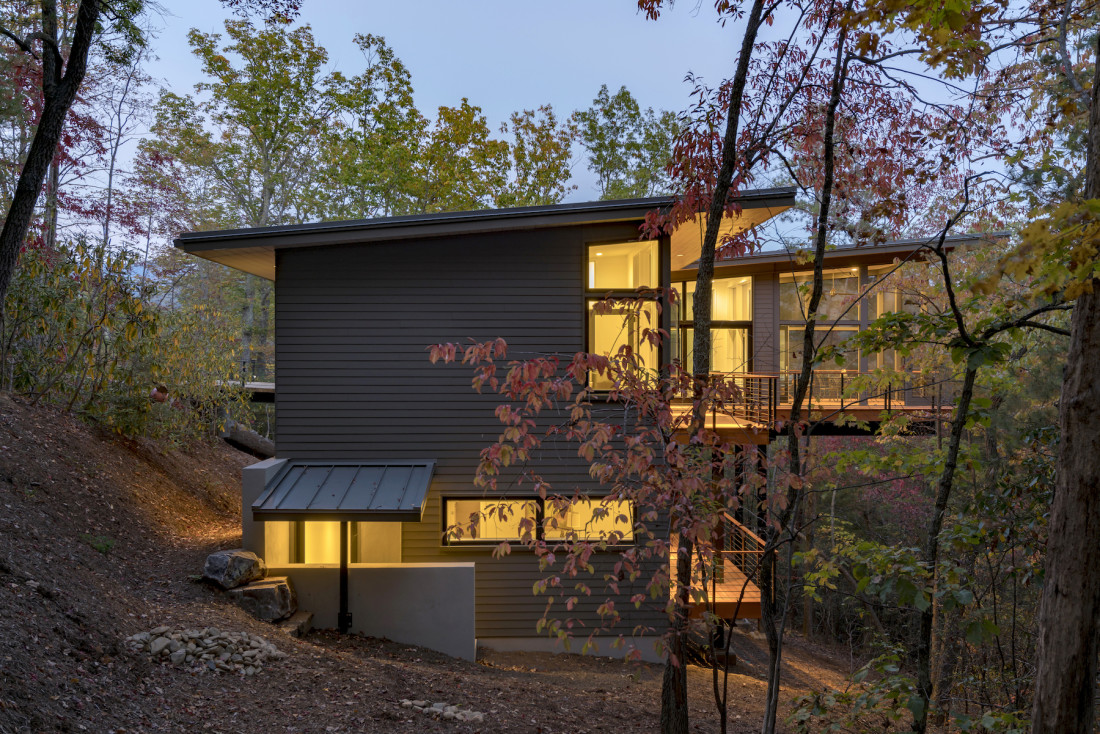
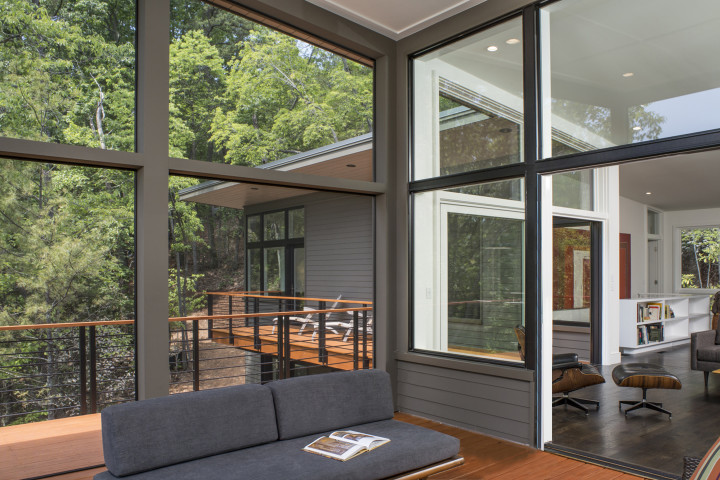

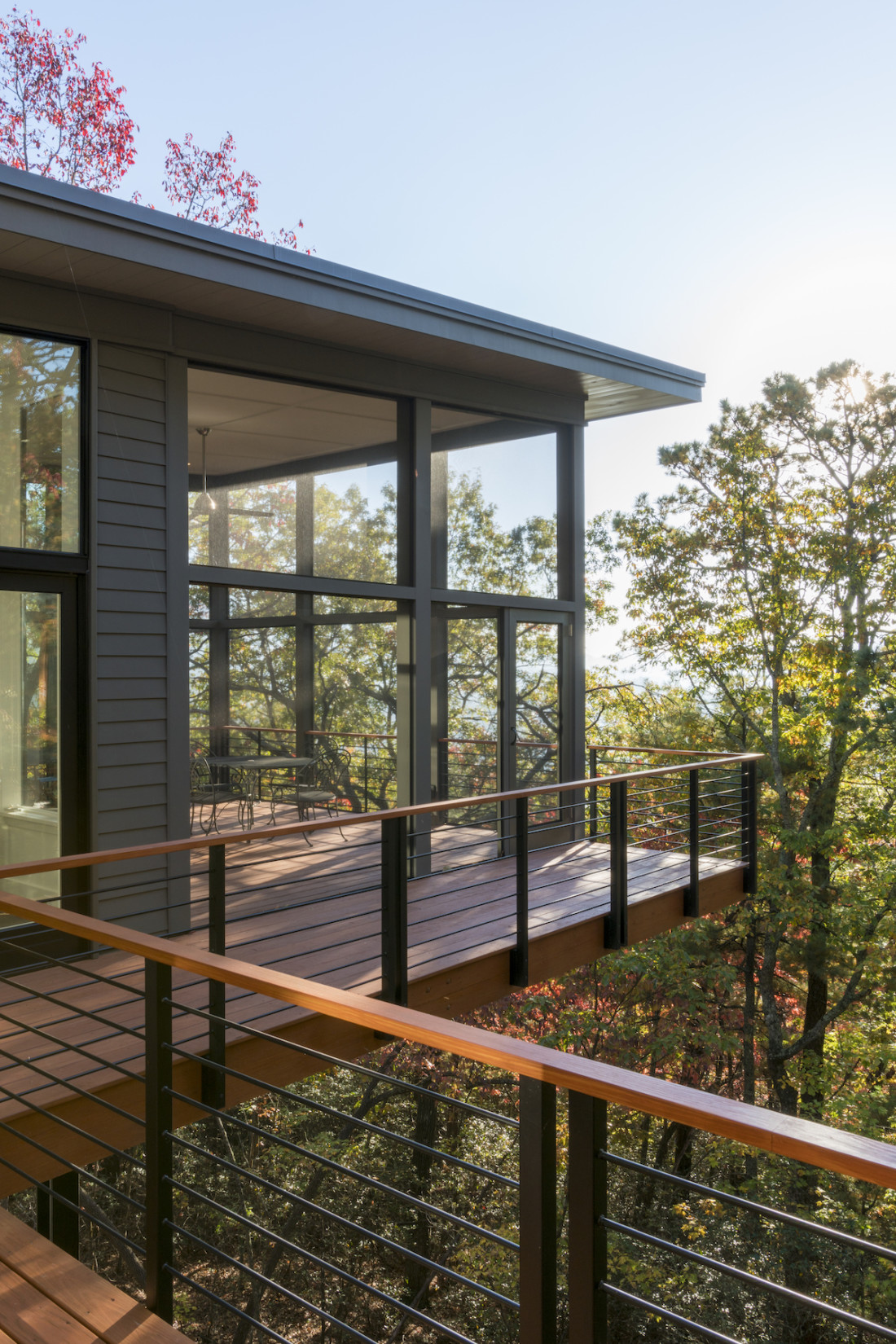
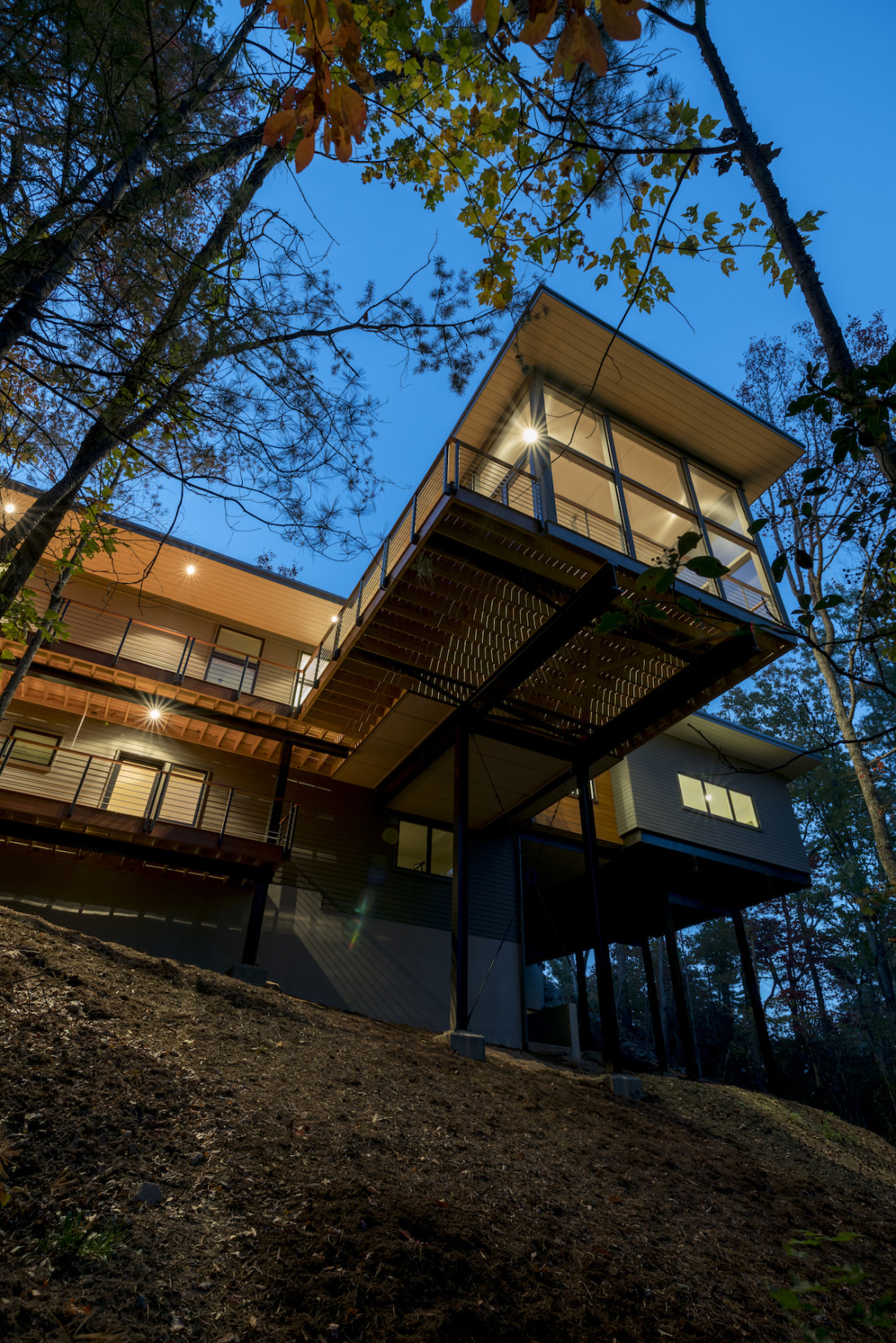
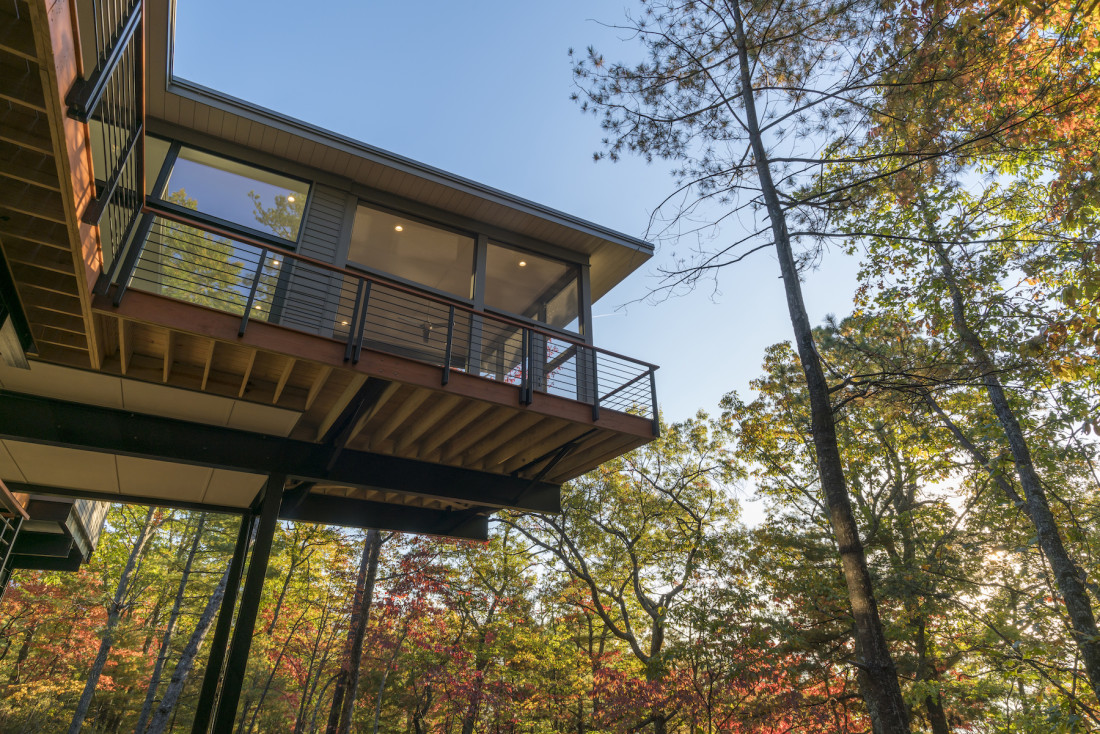
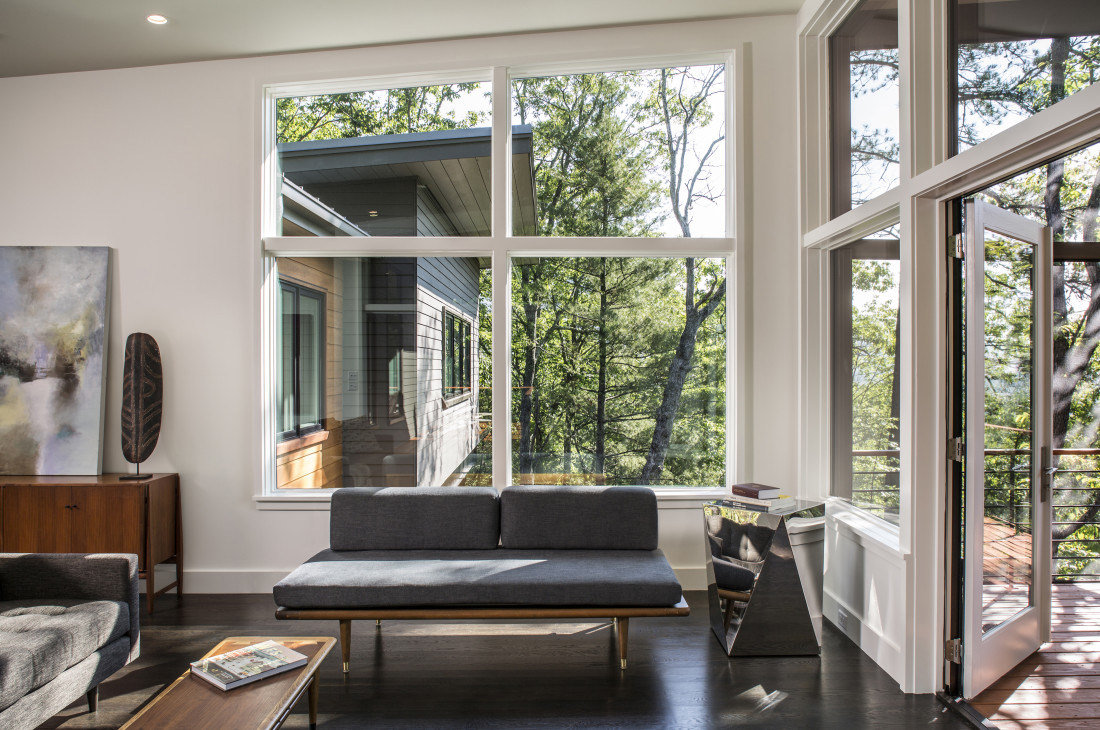
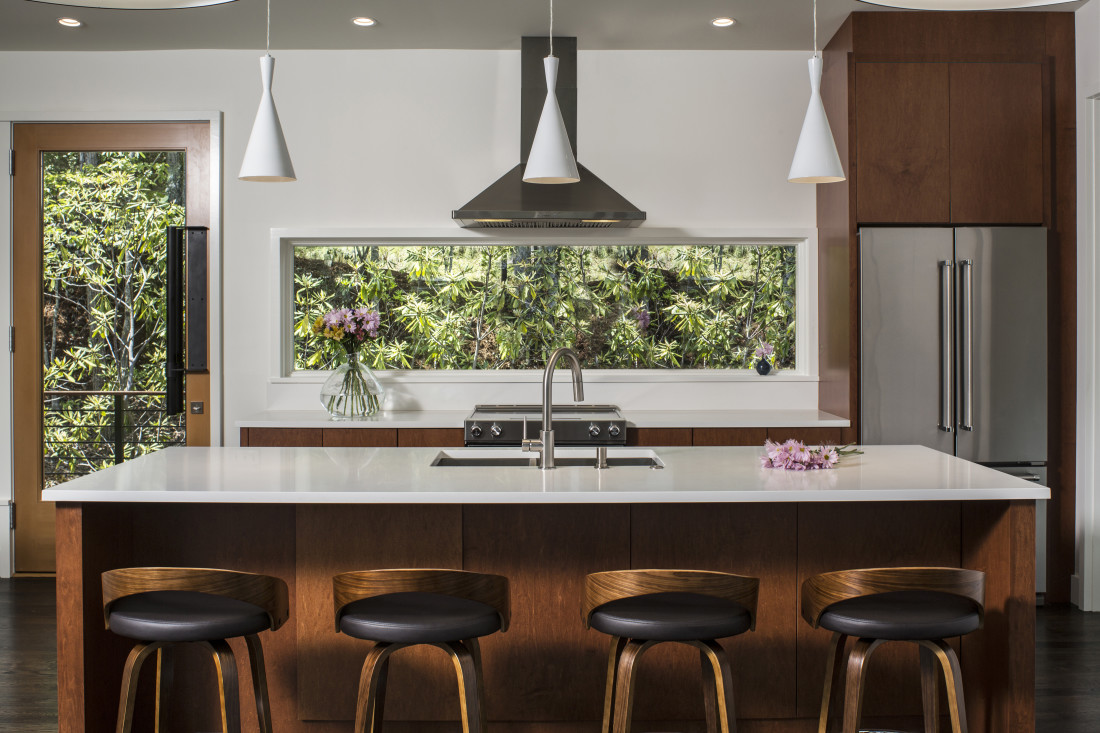

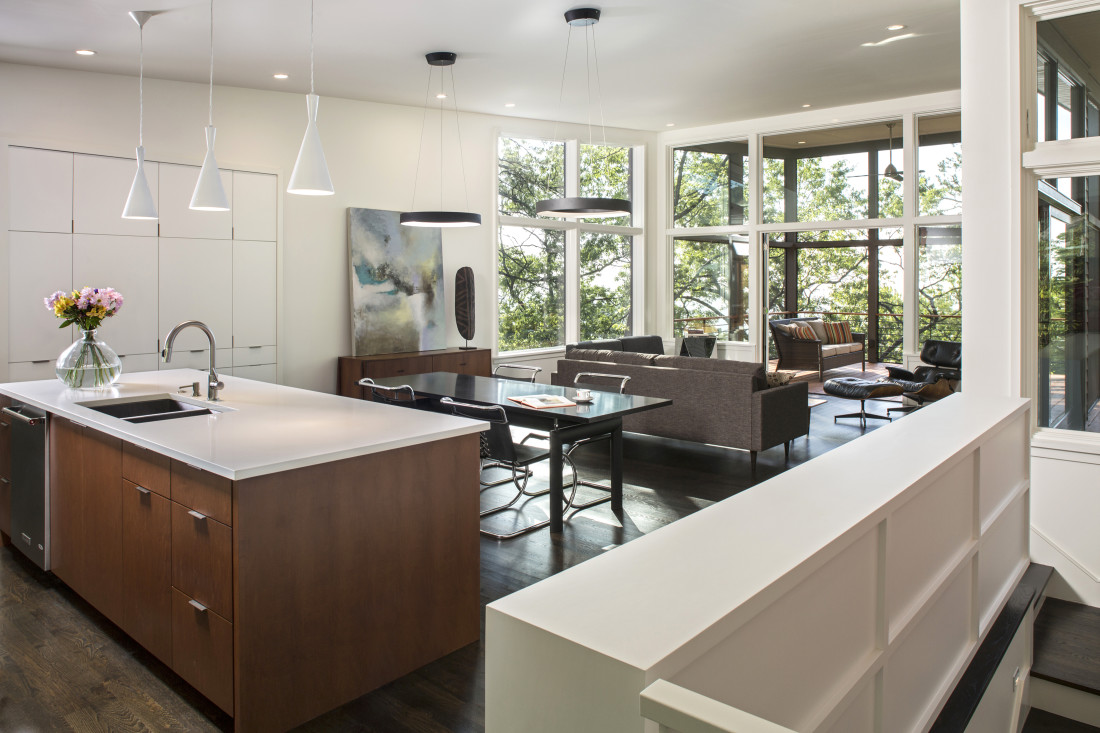
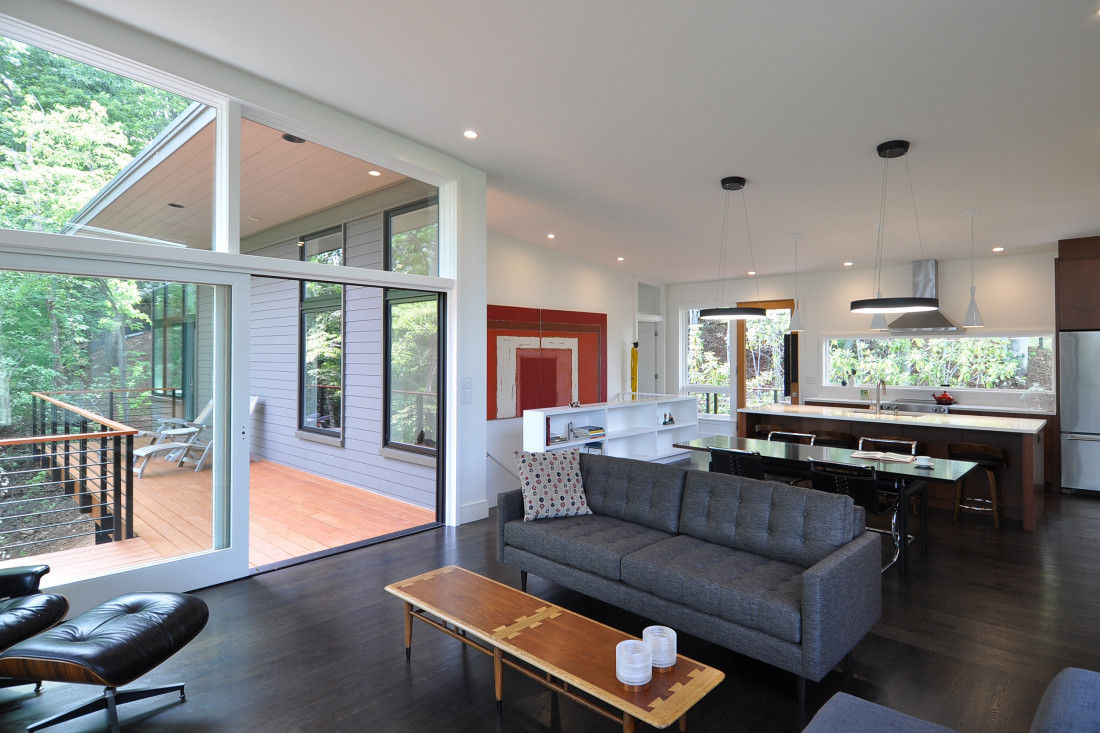
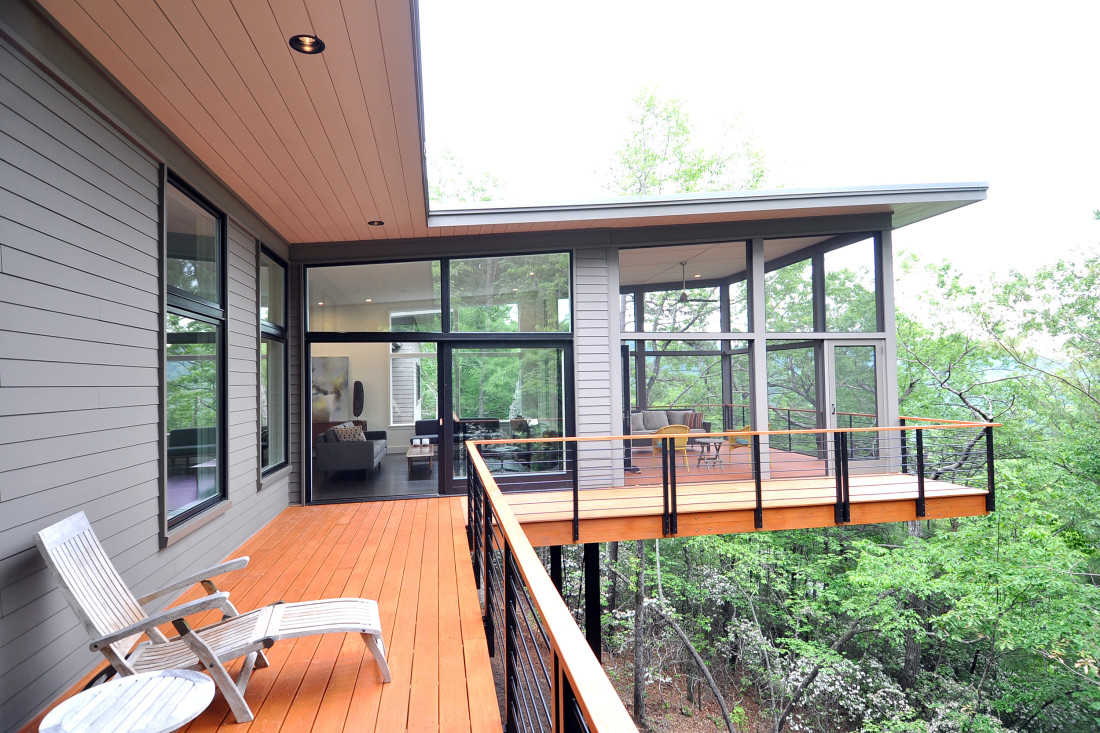
Very, very nice. I’m partial to tree houses and that’s the best one I’ve ever seen!
help w plans